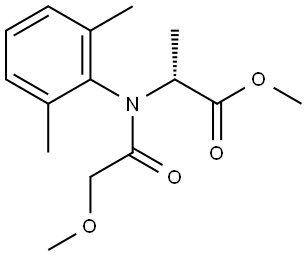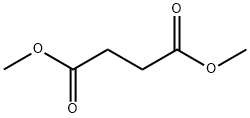Quizalofop-p-ethyl
Synonym(s):DPX-Y6202;Ethyl (R)-2-[4-(6-chloro-2-quinoxalyloxy)phenoxy]propionate;Quinofop-ethyl
- CAS NO.:100646-51-3
- Empirical Formula: C19H17ClN2O4
- Molecular Weight: 372.8
- MDL number: MFCD09028086
- SAFETY DATA SHEET (SDS)
- Update Date: 2024-12-18 14:15:30

What is Quizalofop-p-ethyl?
The Uses of Quizalofop-p-ethyl
Post-emergence herbicide for control of grassy weeds in broad-leaved crops. Herbicide.
What are the applications of Application
Quizalofop-p-ethyl is a useful biochemical for proteomics research
Definition
ChEBI: Quizalofop-P-ethyl is an ethyl 2-{4-[(6-chloroquinoxalin-2-yl)oxy]phenoxy}propanoate that has R configuration. A proherbicide for quizalofop-P, it is used to control annual and perennial grass weeds in a variety of crops, including potatoes, sugar beet, peanuts, cotton and flax. It has a role as a proherbicide and an agrochemical. It is an ethyl 2-{4-[(6-chloroquinoxalin-2-yl)oxy]phenoxy}propanoate and a quinoxaline herbicide. It is functionally related to a quizalofop-P. It is an enantiomer of a (S)-quizalofop-ethyl.
Purification Methods
This (±)-herbicide forms white crystals from Me2CO/EtOH and sublimes in vacuo. Large quantities can be distilled at high vacuum. Its solubilities at 20o in g/10mL are 0.09 (EtOH), 1.1 (Me2CO), 1.2 (xylene), 2.9 (*C6H6), and is nearly insoluble in H2O (0.3mg/L). The (±)-acid has [95977-28-9]. The R-ester enantiomer has m 76-77o (pale brown crystals from EtOH), [ ] D 20 + 3 5 . 9o (EtOH). It is the more active fatty acid synthase inhibitor (designated DPX-Y6202) used to control grassy weeds in broadleaf crops.
Properties of Quizalofop-p-ethyl
| Melting point: | 76-77°C |
| Boiling point: | 220 °C |
| Density | 1.301±0.06 g/cm3(Predicted) |
| Flash point: | >100 °C |
| storage temp. | Store at 2-8°C |
| solubility | Chloroform (Slightly), Methanol (Slightly) |
| form | Solid |
| form | neat |
| pka | -1.39±0.48(Predicted) |
| color | Light yellow to yellow |
| Water Solubility | 0.04 g/100 mL |
| CAS DataBase Reference | 100646-51-3(CAS DataBase Reference) |
| EPA Substance Registry System | Quizalofop-P-ethyl (100646-51-3) |
Safety information for Quizalofop-p-ethyl
| Signal word | Warning |
| Pictogram(s) |
 Exclamation Mark Irritant GHS07 |
| GHS Hazard Statements |
H413:Hazardous to the aquatic environment, long-term hazard |
| Precautionary Statement Codes |
P264:Wash hands thoroughly after handling. P264:Wash skin thouroughly after handling. P270:Do not eat, drink or smoke when using this product. P273:Avoid release to the environment. P280:Wear protective gloves/protective clothing/eye protection/face protection. P301+P312:IF SWALLOWED: call a POISON CENTER or doctor/physician IF you feel unwell. |
Computed Descriptors for Quizalofop-p-ethyl
New Products
(S)-3-Aminobutanenitrile hydrochloride 4-Methylphenylacetic acid N-Boc-D-alaninol N-BOC-D/L-ALANINOL Tert-butyl bis(2-chloroethyl)carbamate 3-Morpholino-1-(4-nitrophenyl)-5,6-dihydropyridin- 2(1H)-one Furan-2,5-Dicarboxylic Acid Tropic acid 1-Bromo-3,5-Di-Tert-Butylbenzene S-2-CHLORO PROPIONIC ACID ETHYL ISOCYANOACETATE 2-Bromo-1,3-Bis(Dimethylamino)Trimethinium Hexafluorophosphate 4-IODO BENZOIC ACID 3-NITRO-2-METHYL ANILINE 1-(2,4-DICHLOROPHENYL) ETHANAMINE (2-Hydroxyphenyl)acetonitrile 4-Bromopyrazole 2-(Cyanocyclohexyl)acetic acid 4-methoxy-3,5-dinitropyridine 1-(4-(aminomethyl)benzyl)urea hydrochloride 2-aminopropyl benzoate hydrochloride diethyl 2-(2-((tertbutoxycarbonyl)amino) ethyl)malonate tert-butyl 4- (ureidomethyl)benzylcarbamate Ethyl-2-chloro((4-methoxyphenyl)hydrazono)acetateRelated products of tetrahydrofuran








You may like
-
 Quizalofop-p-ethyl 95.00% CAS 100646-51-3View Details
Quizalofop-p-ethyl 95.00% CAS 100646-51-3View Details
100646-51-3 -
 Quizalofop-P-ethyl CAS 100646-51-3View Details
Quizalofop-P-ethyl CAS 100646-51-3View Details
100646-51-3 -
 Quizalofop-P-ethyl CAS 100646-51-3View Details
Quizalofop-P-ethyl CAS 100646-51-3View Details
100646-51-3 -
 1975-50-4 98%View Details
1975-50-4 98%View Details
1975-50-4 -
 2-HYDROXY BENZYL ALCOHOL 98%View Details
2-HYDROXY BENZYL ALCOHOL 98%View Details
90-01-7 -
 2-Chloro-1,3-Bis(Dimethylamino)Trimethinium Hexafluorophosphate 221615-75-4 98%View Details
2-Chloro-1,3-Bis(Dimethylamino)Trimethinium Hexafluorophosphate 221615-75-4 98%View Details
221615-75-4 -
 14714-50-2 (2-Hydroxyphenyl)acetonitrile 98+View Details
14714-50-2 (2-Hydroxyphenyl)acetonitrile 98+View Details
14714-50-2 -
 118753-70-1 98+View Details
118753-70-1 98+View Details
118753-70-1